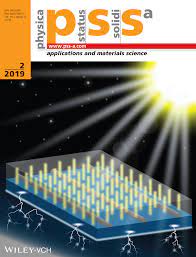Phytosynthesized Cu Doped Cerium Oxide Nanoparticles For Antibacterial Application
Abstract
Phytosynthesized copper doped cerium oxide nanoparticles (NPs) are synthesised and their application potential in antibacterial activity is investigated. The compensative effect of Cu2+ occupying Ce4+/Ce3+ site and redox conversion of Ce4+ to Ce3+ are found to facilitate the antibacterial activity of the doped NPs. The preliminary characterizations are done using X-ray diffraction, Fourier transform infra-red spectroscopy, Raman spectroscopy and energy dispersive analysis of X-rays. The particle size distribution curves from Field emission scanning data give the mean particle sizes to be ∽ 20.4 nm, 19.9 nm and 18.8 nm respectively for pure, lightly doped and heavily doped NPs. The Transmission electron microscopy manifests tetra and hexa-shaped particles, indicating the presence of Ce2O3/Ce1-xCuxO2 along with ceria in pure and lightly doped and an additional presence of CuO in the heavily doped. The X-ray photoelectron spectra of Ce 3d deconvolute to ten peaks corresponding to Ce3+ and Ce4+ yielding Ce3+/Ce4+ % ratio <1 and Cu 2p and O1s spectra are fitted to assess variation in Cu% and oxygen vacancies with doping. The Cu doped CeO2 samples show a commendable improvement over pure ceria, in the antibacterial activity against pathogenic bacteria Escherichia coli, Staphylococcus aureus and Bacillus Cereus.


Leave a Reply